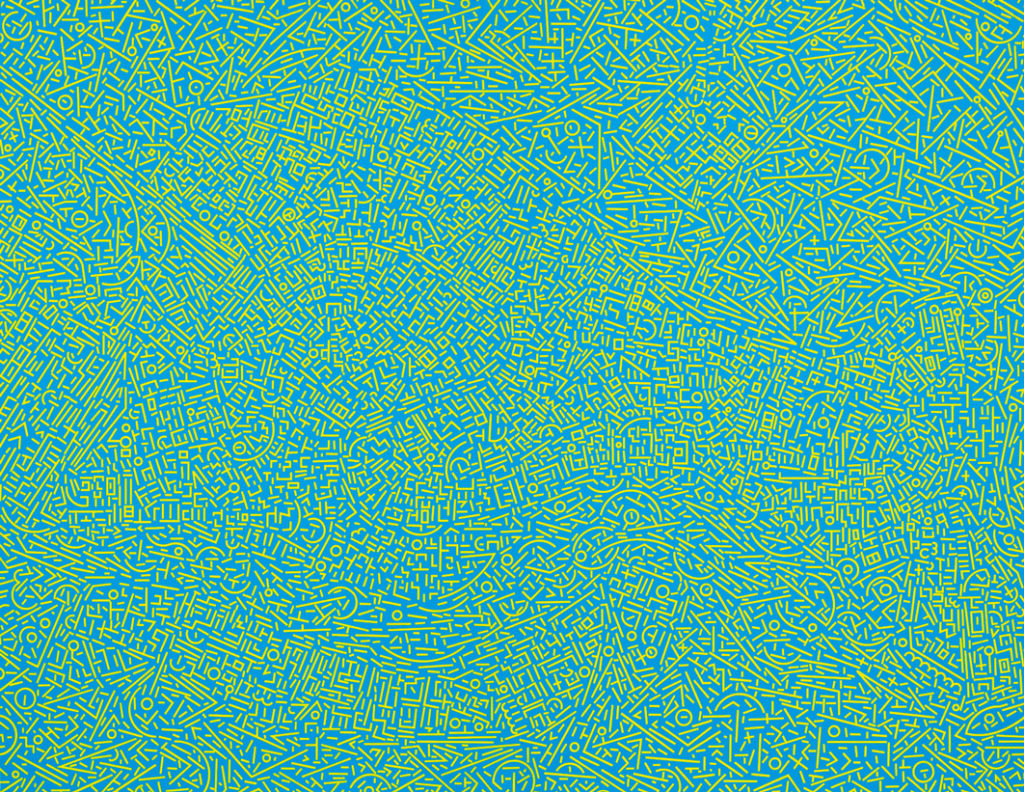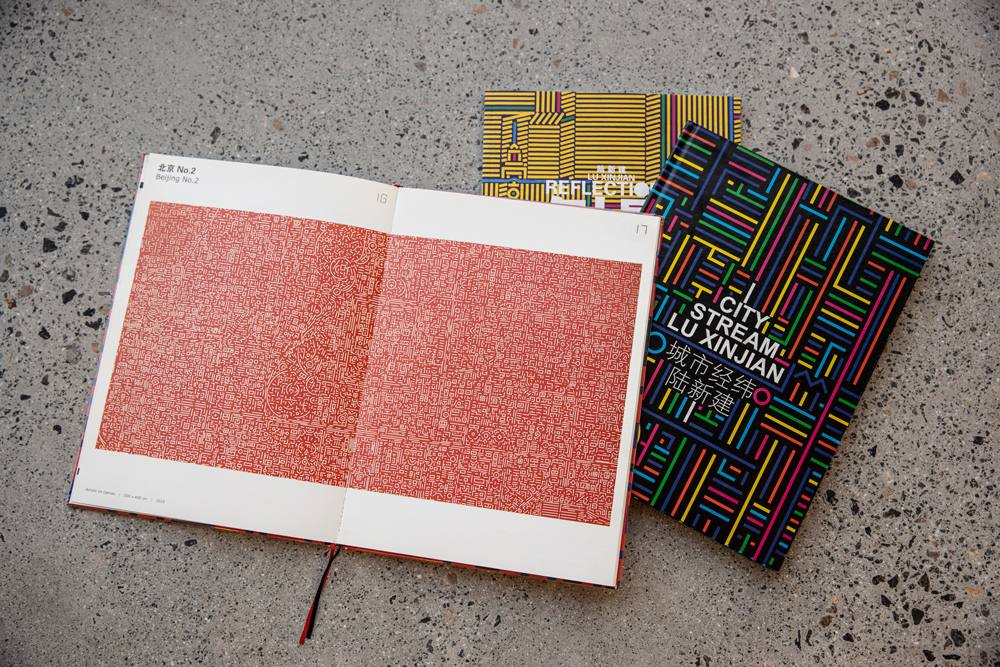So here is my second blog post for the new website that covers White Rabbit Gallery, the White Rabbit Collection and its archive, and the new Research Library at Dangrove - it's about artist Lu Xinjian and his collaboration with Nike. What it doesn't tell you is that Lu Xinjian's paintings were some of the very first that I saw in a gallery in Beijing, on my first visit to China as a recipient of the NSW Premier's Travelling Scholarship. I was utterly clueless, totally lost in Caochangdi, and walked into a gallery where I got talking to the very lovely Shasha Liu - now a friend - who told me that an Australian collector called Judith Neilson had just acquired two of the paintings. A lot has happened since then!
Read on ...
In early 2011 two paintings by an emerging Chinese artist were acquired for the White Rabbit Collection. They used an unusual technique derived from the aerial mapping of cities to produce large, apparently abstract canvases with grids and formalist designs. Critics noted they recalled the paintings of Piet Mondrian and the early Modernist de Stijl artists and designers. The artist was Lu Xinjian, a Shanghai-based painter who had indeed studied in the Netherlands and had loved Dutch design since he was a young student in Nanjing. The two paintings, from his important early City DNA series, turned out not to be abstract at all, but rather represented aerial views of Beijing and Venice. Sources for his imagery included maps and satellite views of each location, as well as photographs, but the artist sees his work as philosophically complex and multi-layered. He believes cities are built and defined by history, culture and language as much as by geography; each is distinct and unique, despite the homogenising impact of globalisation.

City DNA Beijing, 2010, oil on canvas
City DNA: Beijing (2010) shows the symmetrical axis of the Forbidden City, its surrounding
lakes and the jumble of historical hutongs and courtyards in lines and dashes on a scarlet ground.
The artist’s source imagery is scanned into a graphics software program to create a vinyl stencil,
from which each shape must be carefully unpeeled before he can paint over it, in colours selected
from national or city flags. The process is repetitive and exhausting – it can take up to four days
to peel off each line from the stencil over one large canvas. The annotated print-outs from Google
Maps that Lu donated to the Judith Neilson/White Rabbit Collection archive reveal how he begins
the laborious process of designing these complex compositions.

City DNA Venice, 2010, oil on canvas
Lu Xinjian sees his slow, methodical practice as connected to meditation or the calming
practice of Qi Gong, despite the frenetic contemporary hustle and bustle of his urban subjects.
He says, ‘Coming from a small peasant village where nothing changes and the cultivation of tea
marks the rhythms of life, the dynamism of the urban landscape has always fascinated me.’

Fast Forward to 2018. Lu Xinjian, now an extremely successful artist on the international
stage, collaborates with Nike on a remarkable project: transferring new City DNA designs to a
limited edition shoe, initially one especially designed for the current marathon world record holder
Eliud Kipchoge. Asked about the connection between artist and runner, Lu explained:
‘He runs through cities, crosses them, lives them, takes them step by step. Instead, I paint the cities
– not only the shapes on the canvas, but also the speed, the noise, the atmosphere.’
Only 300 pairs of shoes were produced, released at the first Nike flagship store in Shanghai.
Their designs are based on the map of Shanghai, with the Huangpu River at its centre.
Two pairs of these extraordinary shoes are now in the research library at Dangrove, evidence of
the enduring link between contemporary art and design that has been embraced by Chinese artists.
Here, researchers can find interviews, plans and diagrams in the archive, books and catalogues
in the library, and of course the works themselves in the collection.

Check out the whole website HERE - navigate to the 'Dangrove' section for information about the
White Rabbit Collection and its archive.